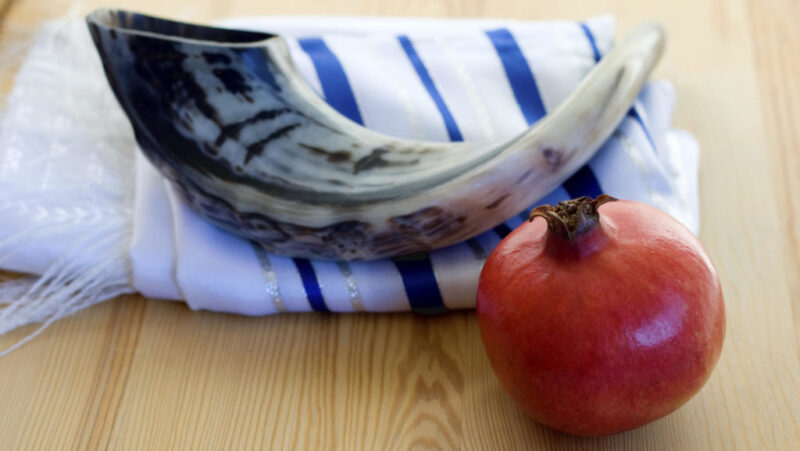Opinion
COVID keepers
Third time’s the charm – High Holy Days in the time of COVID-19, again
In Short
These have been challenging times, but we now have two plus years of experience utilizing hybrid technology, providing our communities with a variety of experiences, and innovating to improve the High Holy Day experience.
So here we are again planning for High Holy Days in the shadow of COVID-19.
I think back to our preparations during the summer of 2020 – how on earth were we going to pull off the High Holy Days when people wouldn’t be able to gather in person? How could we have a meaningful, joyful and communal experience if everyone was joining via the screen? What would the High Holy Days in the time of COVID cost and would people show up?


Courtesy
I then think about our experiences in the summer of 2021 – how many times would we need to pivot to adjust to the ever-changing COVID numbers and levels of spread that we were witnessing? What would an intentionally hybrid High Holy Day experience feel like for the people at home and for those in person? How were we going to keep everyone “happy” and provide a meaningful communal experience when they all seemed to want something different?
And then I think about the Fall of 2020 and 2021, late September and into October when we could reflect on the High Holy Day experiences that we were able to provide for our communities. Despite all the challenges, they were meaningful, they were communal and they were joyful. We found ways to engage our communities on screen, in person and in hybrid settings where both groups had to be connected. And we also discovered that some of the changes which were necessitated by COVID actually made our High Holy Day experiences more meaningful and engaging, more joyful and communal, more in line with what our people wanted.
I don’t know who needs to hear this (maybe it’s only me), but to all of the synagogue leaders involved in preparing for the High Holy Days this summer – you’ve got this, you will make it work and you will rise to whatever challenges are placed before you. You’ve done it before and you’ll do it again.
In the midst of this year’s preparations, I think that there are a few lessons from the last two plus years that can inform our preparation and also ensure that we continue to provide what our communities need.
I know that our community is not alone in having invested heavily in our technology over the last couple of years. The audio-visual progress that synagogues have made will ensure that we can now provide the best experience for those who are watching at home, and those who choose to join us in the Sanctuary. We’ve seen that hybrid services can and do work, and through the investment in this technology both have been elevated. I am much more conscious of where I look in the sanctuary today (at faces and cameras) than I was before the pandemic. And alongside this, the need to ensure that we are heard clearly in people’s homes has meant that our in-sanctuary sound has also been elevated. We’ve made hybrid work in a variety of settings and we’ll be able to continue making it work for these High Holy Days.
I think it’s also important to recognize that whatever we might provide, people will make the choices around attendance and engagement that are right for them. Our job is to provide a variety of options and services to meet people where they are, but we cannot expect people to fit neatly into the boxes where we would choose to place them. People will opt for online, outside or in-person indoors based on a whole variety of factors, some known to us and some unknown. We should not be judging success based on numbers who “show up” in the sanctuary, but on the quality of the experiences we offer, on the successful engagement with our community and on our ability to offer our communities ways to celebrate the High Holy Days that work for them.
And with two High Holy Days under the shadow of COVID, it’s also important to look for and celebrate the “COVID keepers” – the changes we made in response to the pandemic that we’ll be keeping moving forward. For our community, the experience of a family Rosh Hashanah and Yom Kippur service outdoors was one that people immediately asked us to repeat regardless of the pandemic. We’ve also made changes to the flow of our services in response to COVID that have made for a more engaging and meaningful experience, while still honoring all of the major touch points. And we are now much more thoughtful about the ways in which we engage our community around the holidays, with items for their homes, suggestions on how to celebrate and rituals for them to perform. It’s more than just the service.
These have been challenging times, but we now have two plus years of experience utilizing hybrid technology, providing our communities with a variety of experiences, and innovating to improve the High Holy Day experience.
And when all is said and done, in the last two years we’ve seen that the power of this time of year transcends the challenges of this particular moment and thousands of years of Jewish history have provided us with countless resources to draw upon.
So, to everyone involved in preparing for the High Holy Days – you’ve got this. And I can’t wait to reflect with you on the variety of ways we all created community, provided meaning, and offered engaging and relevant programming and services for the Jewish community. See you after Simchat Torah!
Rabbi Danny Burkeman is the senior rabbi at Temple Shir Tikva in Wayland, Mass.












